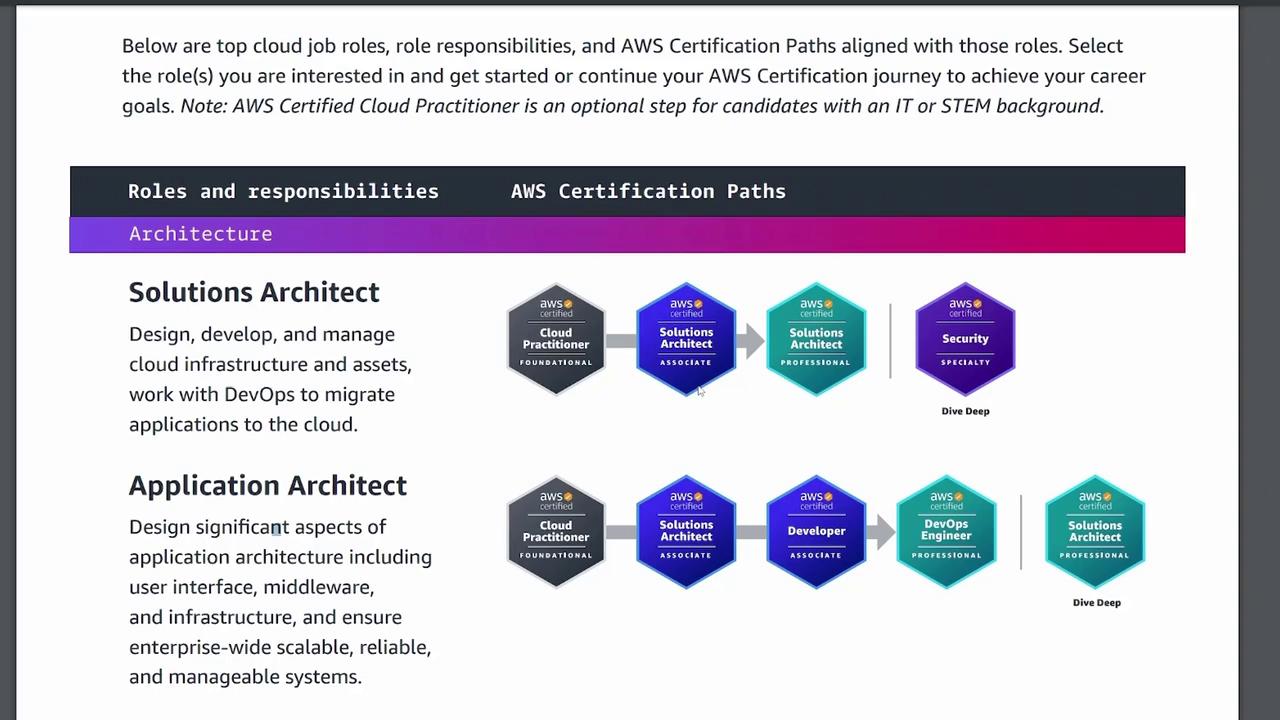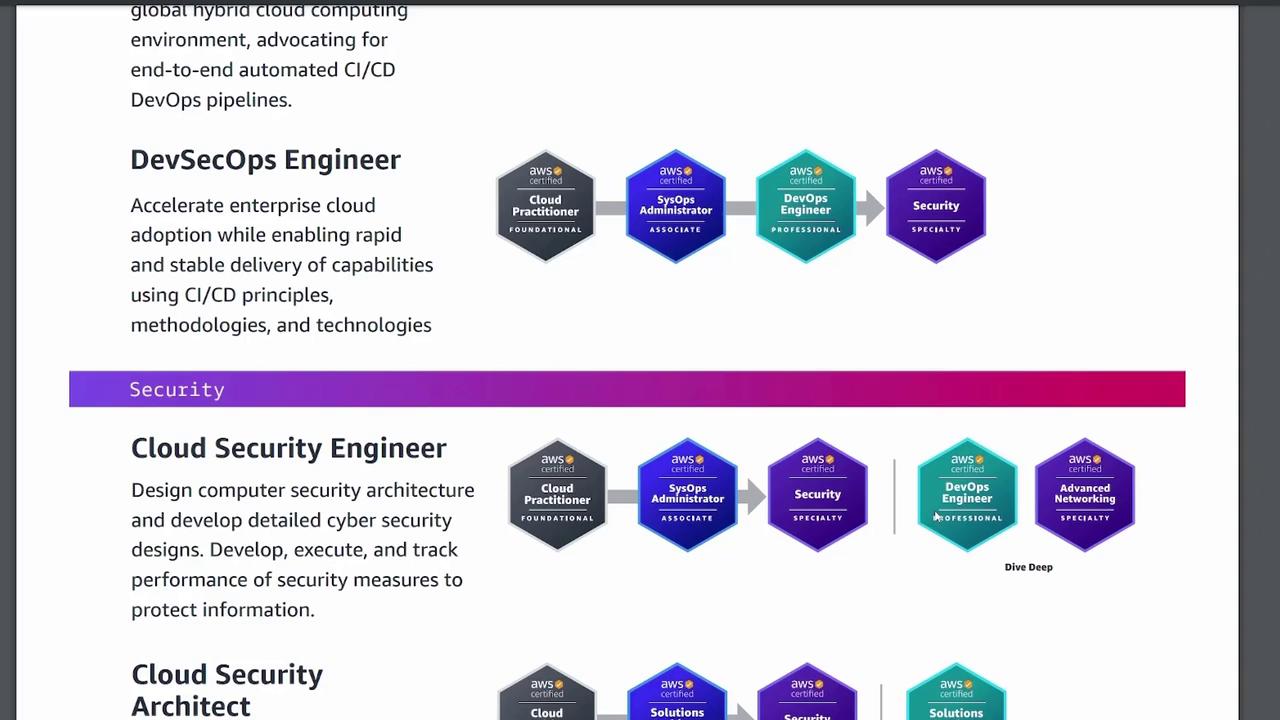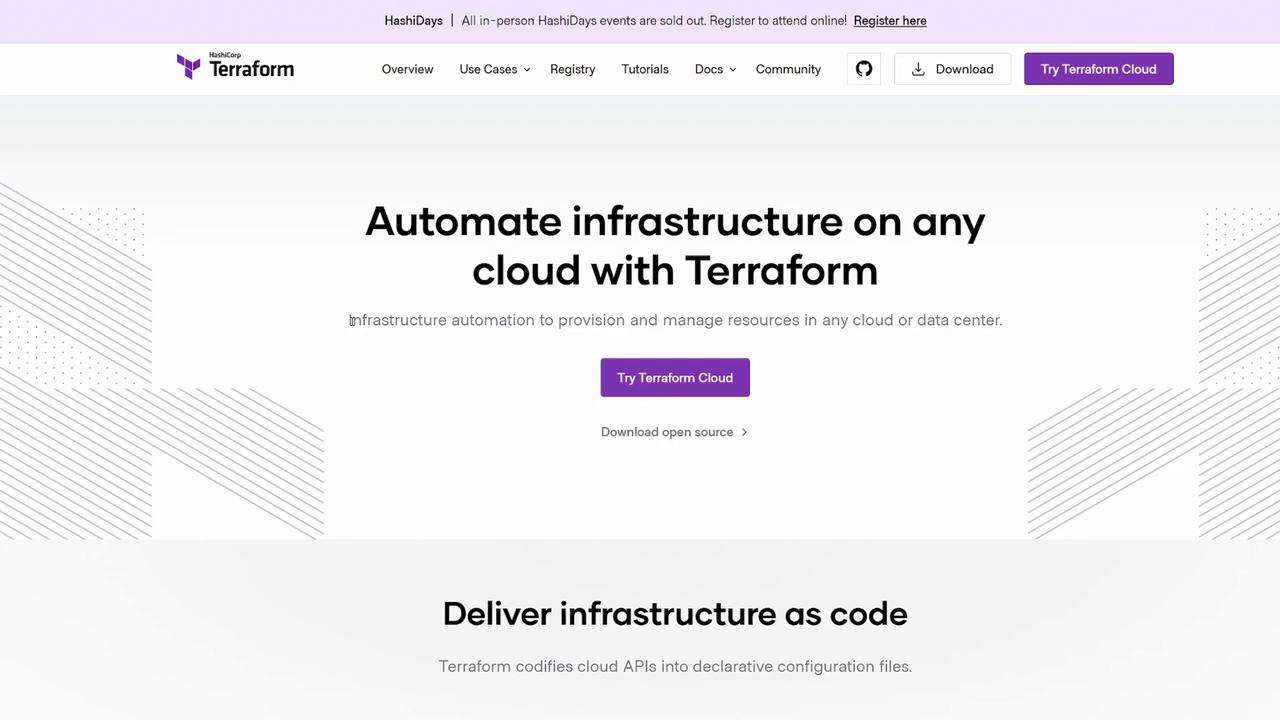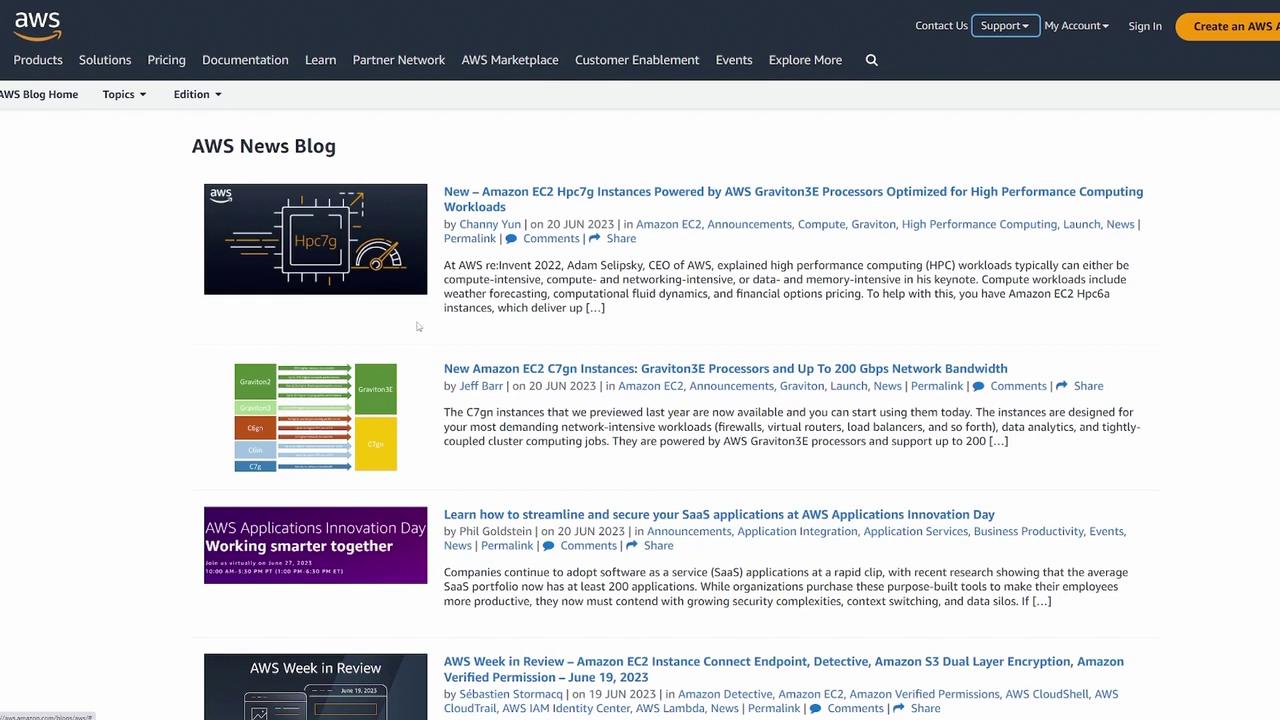AWS Cloud Practitioner CLF-C02
Bringing it all together
The Road ahead on your AWS Journey
Congratulations on completing the course! Now that you have a solid foundation, it's time to expand your knowledge and further your career as a cloud engineer. In this guide, we outline key steps and resources to help you master AWS, expand your skills, and stay ahead in this ever-evolving industry.
After finishing the course, remember that continuous learning is essential. Technology evolves rapidly, so treat learning as a lifelong investment. Whenever you come across a new AWS service or feature—whether at work or out of curiosity—take the opportunity to dig deeper, understand its intricacies, and develop proficiency. This targeted approach will help you become the go-to subject matter expert in your organization.
Helpful Resource
For a deep dive into specific AWS services, refer to the official AWS documentation. The documentation includes comprehensive user guides, API references, tutorials, and best practice guides.
In addition to AWS documentation, you can explore a wealth of resources such as white papers, technical guides, reference materials, and architecture diagrams available on the AWS website. Whether you're interested in security best practices or strategies for cloud adoption, these resources are invaluable. The AWS blog is another excellent resource that features architectural designs and case studies—for example, strategies for handling multi-tenancy.

Once you have mastered the basics, consider advancing your career with an AWS certification. While the introductory exam is a great start, many professionals transition to the AWS Solutions Architect Associate Certification. The foundational knowledge from this course will ease your journey into more advanced topics. However, feel free to choose the certification that best aligns with your interests and career objectives. For example, if you are passionate about security, the Security Specialty certification can be a great fit.
One of the major benefits of AWS certifications is that they have no strict prerequisites. Whether you aspire to be a Solutions Architect, DevOps Engineer, or a cloud security specialist, the choice is yours.

Beyond certifications, it is essential to become familiar with the broader ecosystem of cloud tools. In your professional journey, you'll encounter various tools that complement AWS services. One critical aspect is Infrastructure as Code (IaC), which allows you to manage and deploy your infrastructure using code. IaC tools help automate deployments and streamline the management of large-scale environments.
A leading AWS tool for IaC is AWS CloudFormation, which lets you provision and manage AWS resources efficiently using templates. However, for those working in multi-cloud environments, HashiCorp Terraform is widely used due to its ability to provision infrastructure across various cloud providers.

In addition to CloudFormation and Terraform, consider exploring other tools such as HashiCorp's Packer. Packer allows you to create custom images (AMIs) that can be deployed consistently across multiple environments, minimizing additional configuration efforts.

Another essential tool is Ansible, a configuration management solution that simplifies the management and configuration of multiple servers at once by minimizing manual intervention.
Get Hands-On
Practical experience is the cornerstone of your learning journey. Experiment in the AWS console by deploying applications, exploring different services, troubleshooting issues, and testing creative architectures. Hands-on labs, like those offered in the KodeKloud playgrounds, provide a safe and risk-free environment to practice your skills.
Staying updated with AWS developments is crucial, as AWS continuously introduces new features and updates to existing services. Subscribe to AWS RSS feeds and regularly review AWS announcements to keep pace with the latest changes. Visit the AWS announcements page for the most recent updates.

Additionally, the AWS News Blog is an excellent resource for staying informed about changes and new releases in AWS services.

For those who prefer video content, the KodeKloud YouTube channel features detailed explanations of the latest AWS changes by Michael, and Corey Quinn’s "Last Week in AWS" channel provides concise summaries of recent developments in the AWS ecosystem.
Below is a quick reference table outlining various resources and tools mentioned in this guide:
| Resource Type | Use Case | Example/Link |
|---|---|---|
| AWS Documentation | In-depth user guides and API references | docs.aws.amazon.com |
| AWS Certification | Validate your cloud skills | AWS Solutions Architect Associate |
| Infrastructure as Code | Manage cloud infrastructure via code | AWS CloudFormation, HashiCorp Terraform |
| Image Automation Tool | Create reusable machine images (AMIs) | Packer |
| Configuration Management | Efficient server management and configuration | Ansible |
In summary, your AWS journey is just beginning. Continue advancing your skills through documentation, certifications, and hands-on practice. Stay informed with the latest industry developments and explore the diverse ecosystem of AWS and complementary tools. Each new skill you acquire brings you closer to mastering the cloud.
Happy learning, and best of luck on your AWS journey!
Watch Video
Watch video content